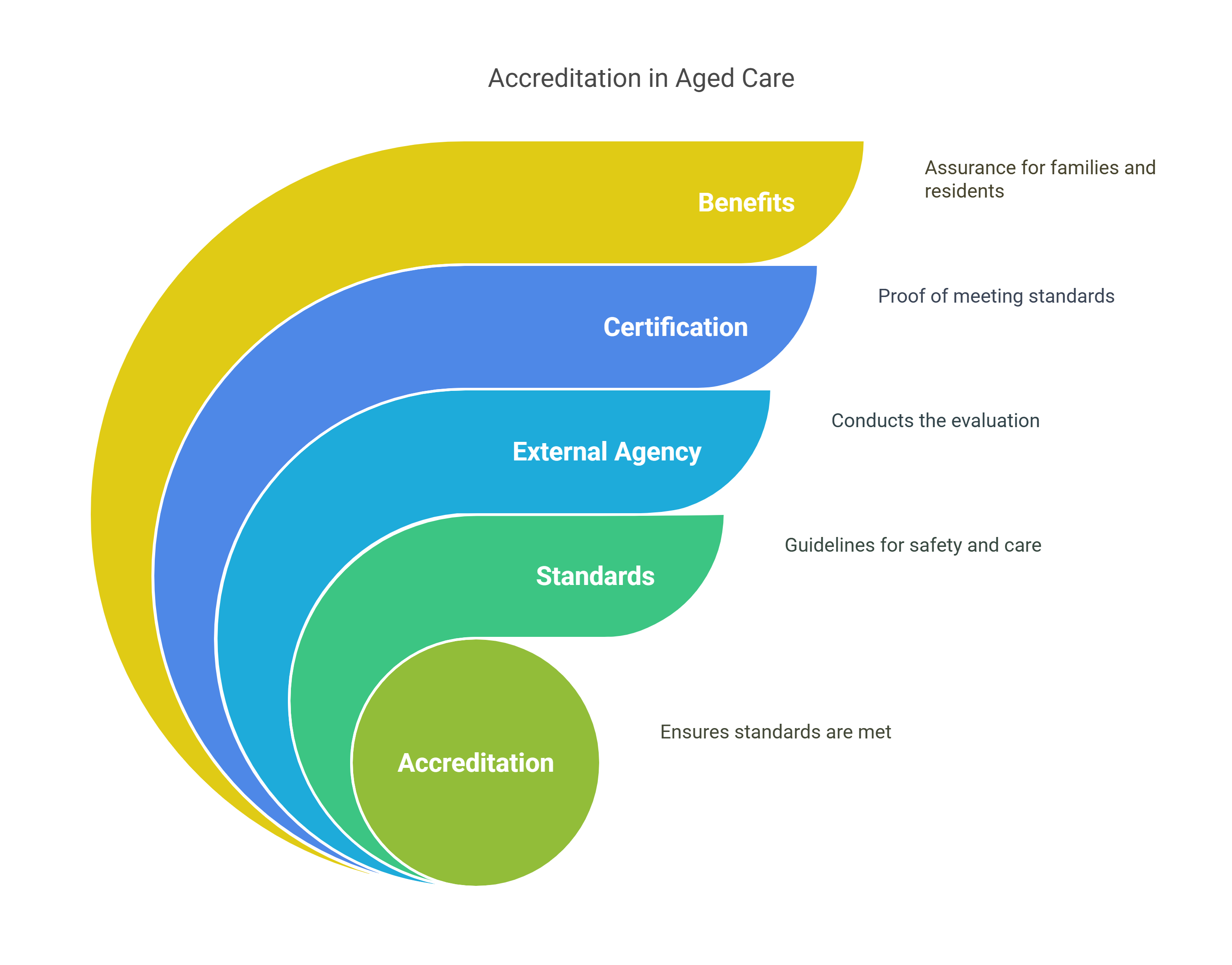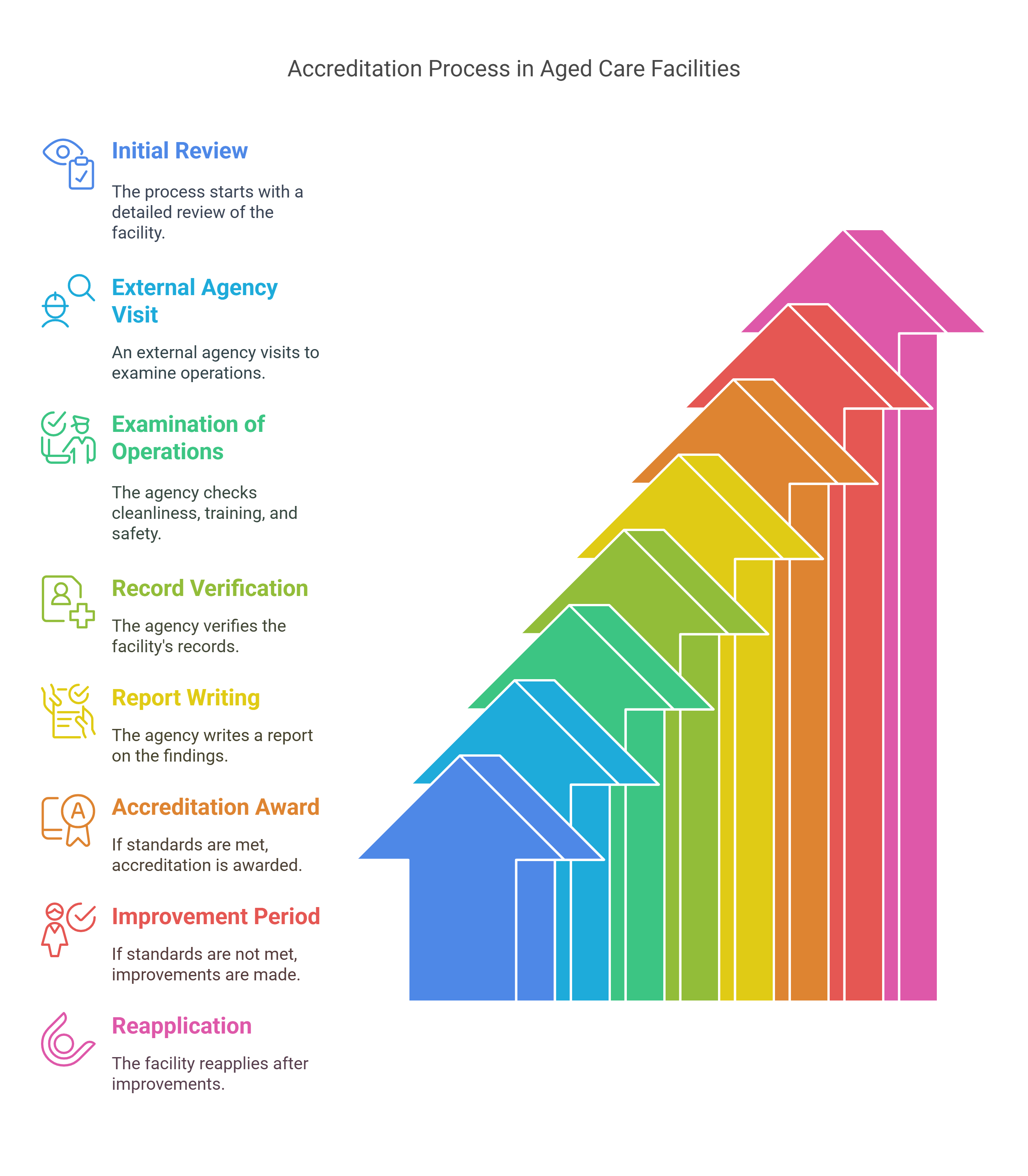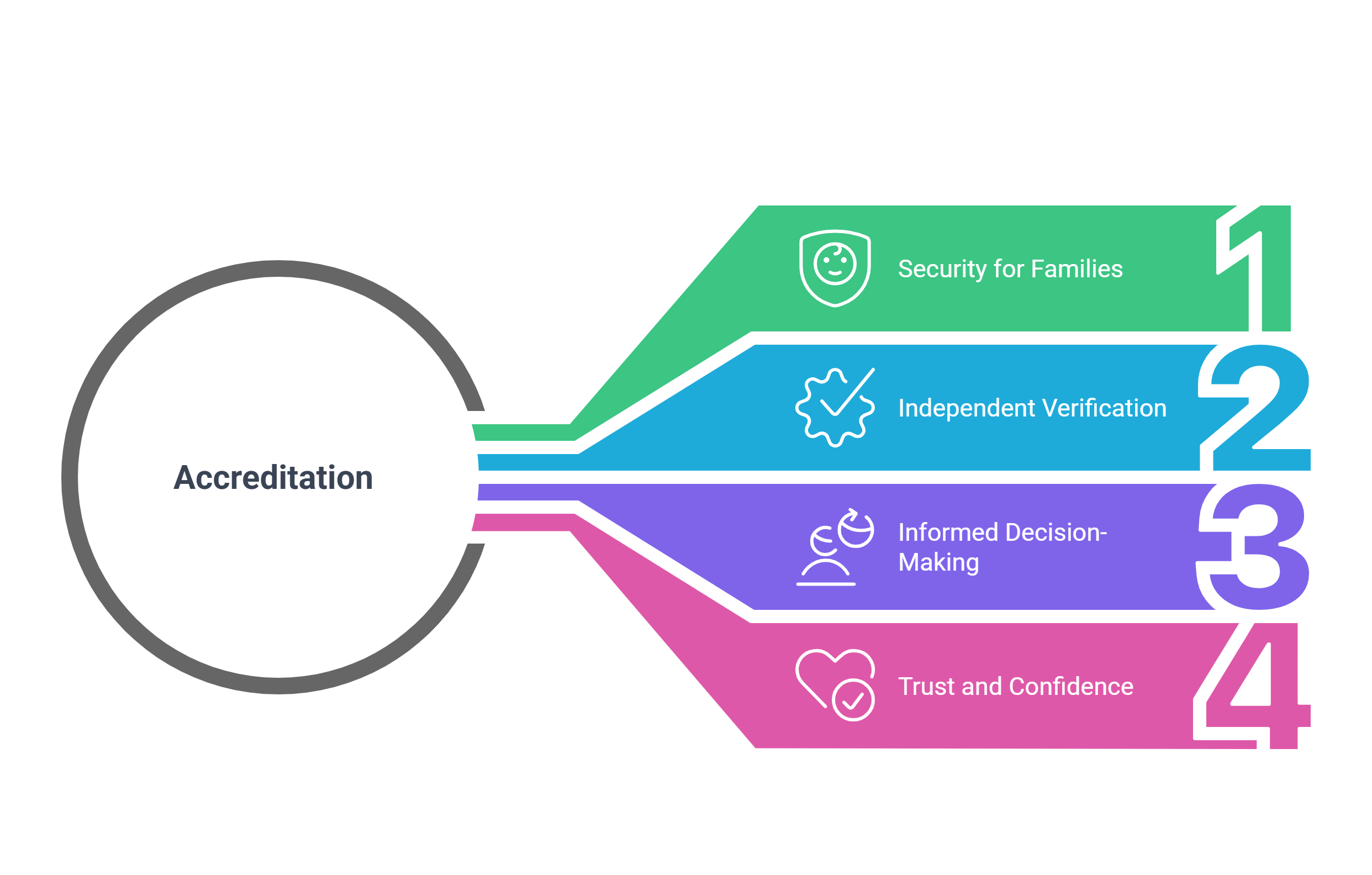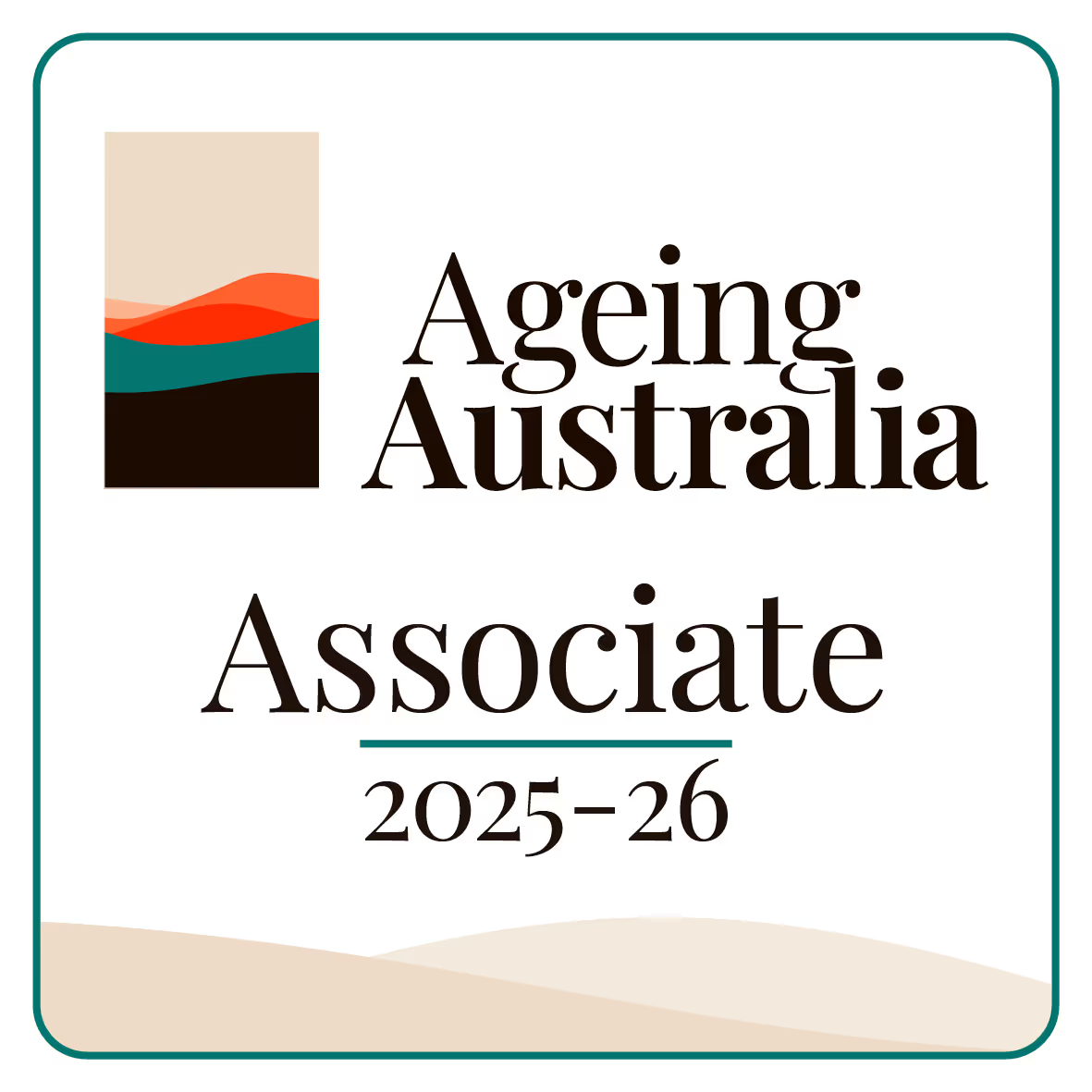What is Accreditation?

Accreditation is a process that checks if an aged care facility meets the set standards for safety, care, and management. In this process, an external agency examines the facility and its services. The agency checks if the facility follows the guidelines that have been made by the government or other official organizations. A facility that passes this process is given a certificate. This certificate shows that the facility has met the required standards. Accreditation gives families and residents a way to know that the facility they choose has been checked and approved by experts.
Why is Accreditation Important in Aged Care?
Accreditation is important because it shows that an aged care facility is safe and provides good care. The process helps to build trust among families, residents, and the community. When a facility is accredited, it means that the facility takes the quality of care seriously and has worked hard to meet the set guidelines. This also means that the facility is willing to be checked by external experts. The process is open and clear. When families see that a facility is accredited, they feel more confident about choosing that place for their loved ones.
How Does the Accreditation Process Work?

The accreditation process begins with a detailed review of the facility. The external agency visits the facility and examines its operations. They look at many parts of the facility, such as the cleanliness of the rooms, the training of the staff, and the safety measures in place. The agency also checks the records of the facility. They look at how the facility keeps track of the care given to the residents. After the review, the agency writes a report on the findings. If the facility meets all the standards, it is awarded accreditation. If the facility does not meet all the standards, the report will list the areas that need to be improved. The facility then has a set time to make these changes and reapply for accreditation. This process helps the facility to keep working on its services so that it may meet the standards in the future.
Who Performs the Accreditation?
Aged care accreditation is performed by an external agency that is independent of the care facility. This agency has experts who are trained to check if the facility meets the required guidelines. The experts work carefully and look at every part of the facility. They talk to the staff, review the records, and even speak with residents to get a clear picture of the services provided. This independent check is important because it provides an unbiased opinion about the facility. The work done by the external agency is based on clear rules and guidelines, making the process fair for every facility.
Benefits of Accreditation for Residents and Families

For residents and families, accreditation is a helpful sign. It shows that the facility has been checked by experts and that it meets the set standards. Families feel more secure when they know that the facility has been independently verified. This verification makes it easier to choose a facility with the best possible care. The certificate that comes with accreditation is a mark of trust. It tells everyone that the facility has made a strong effort to offer a safe place for its residents. When families see the certificate, they know that the facility has passed many checks and has met high standards for care.
Challenges in the Accreditation Process
The process of accreditation can sometimes be challenging for a facility. Preparing for the check requires a lot of work. The facility must collect many documents and records. Staff members may need to attend extra training sessions so that they are ready for the check. Sometimes, the agency finds areas that need improvement. This means that the facility must work hard to fix these issues. Although this process can be difficult, it helps the facility to improve the services that it offers over time.
Final Thoughts
Accreditation is a key part of the aged care system. It gives families and residents a clear sign that the facility meets set standards for safety and care. The process involves a careful check by an external agency that looks at many different parts of the facility. When a facility becomes accredited, it shows that it has worked hard to provide a safe and well-managed environment. This process helps to build trust and confidence among everyone who is connected with the facility. A well-accredited facility is one that is committed to offering a good place for older people to live and receive care.






